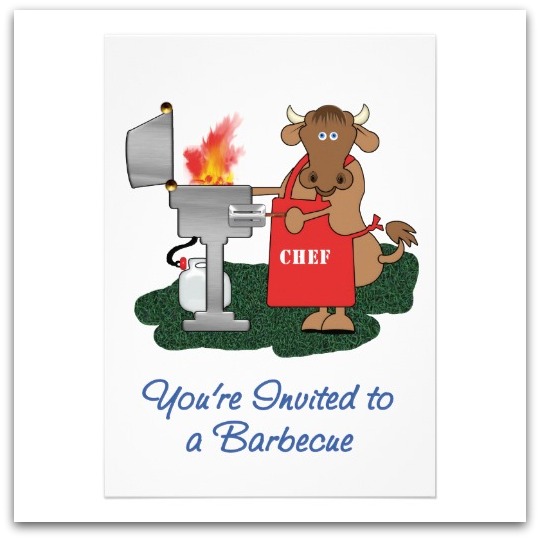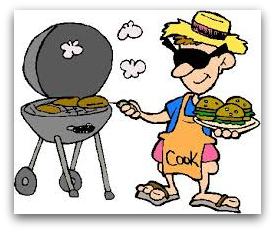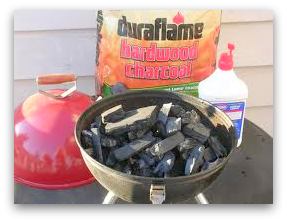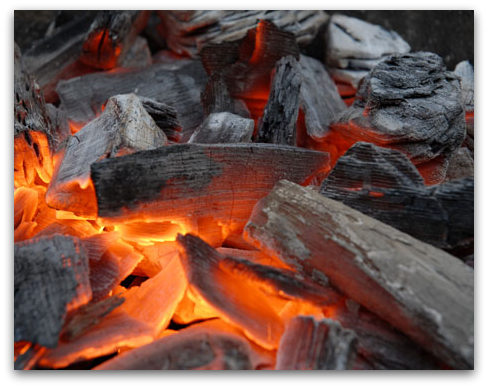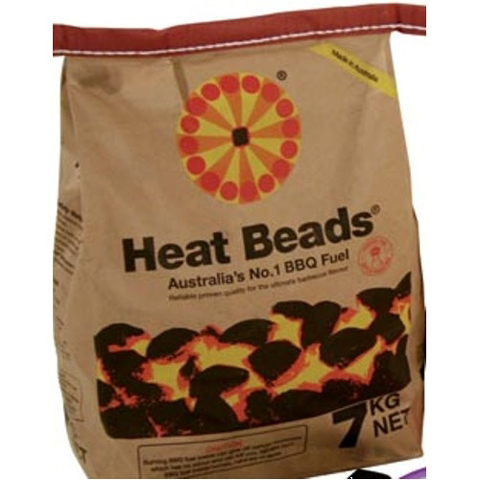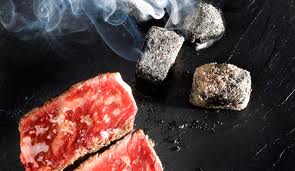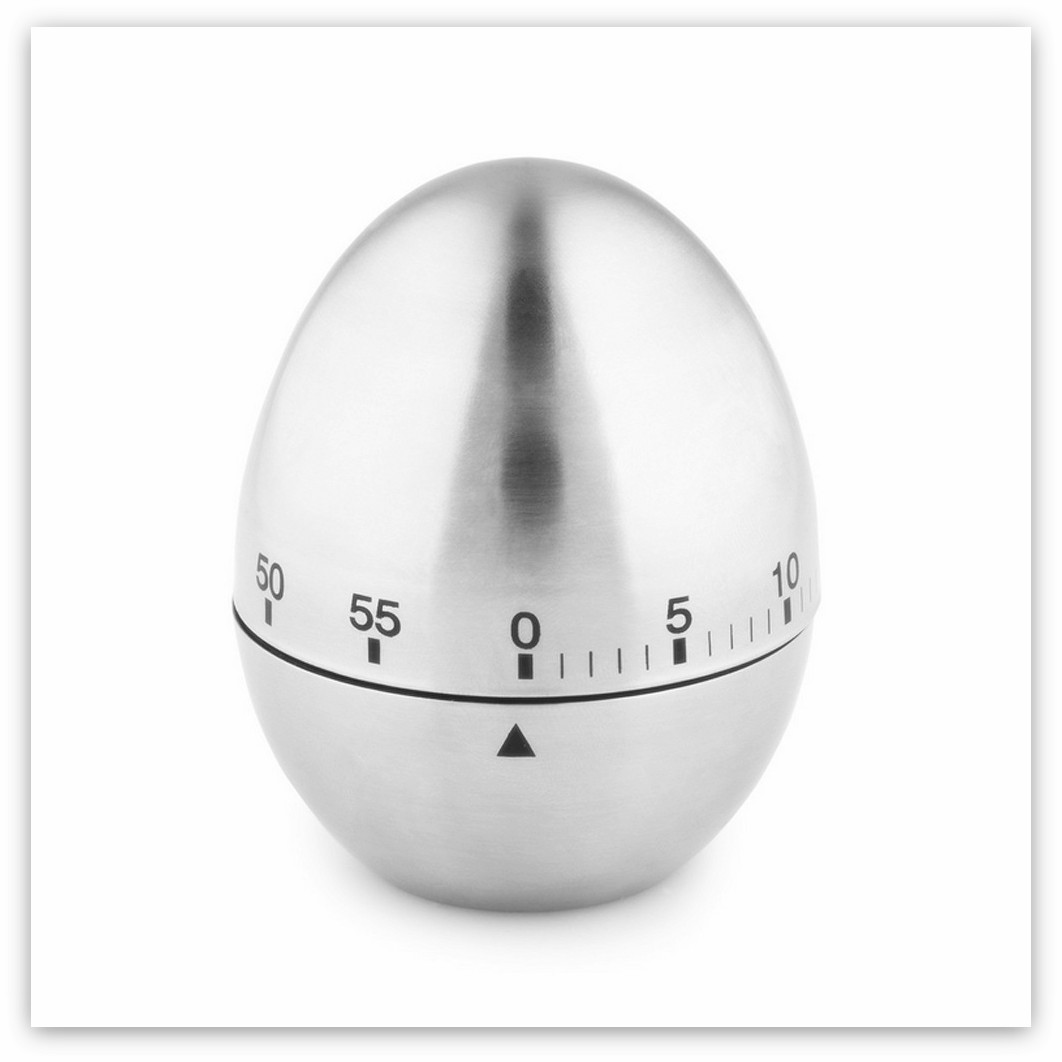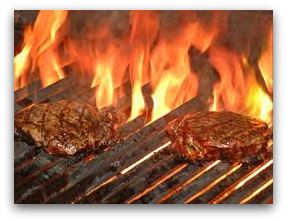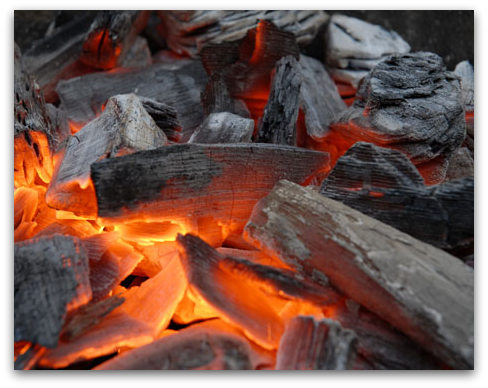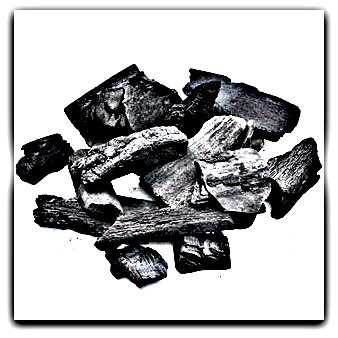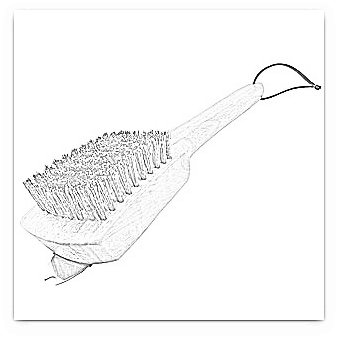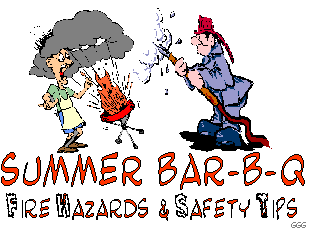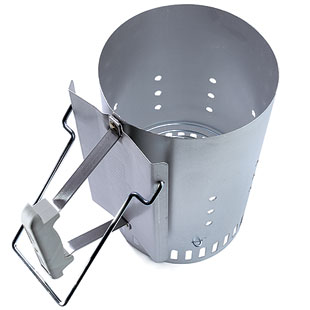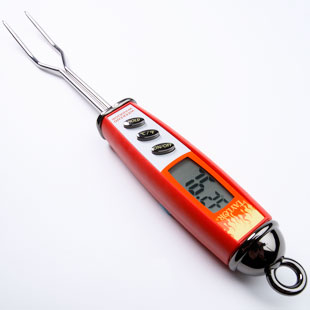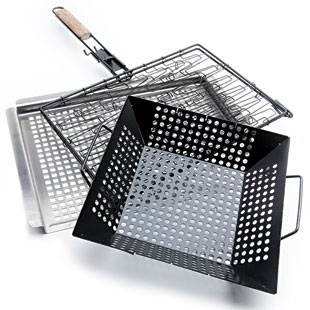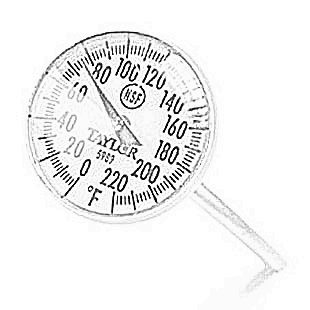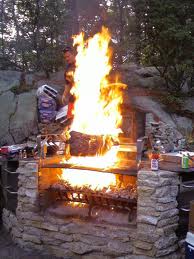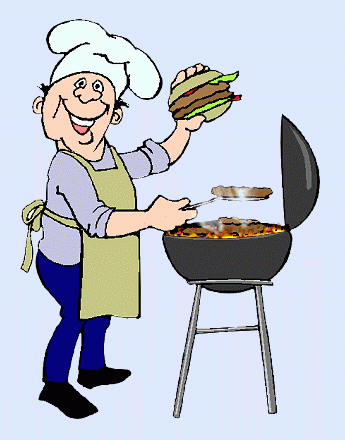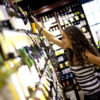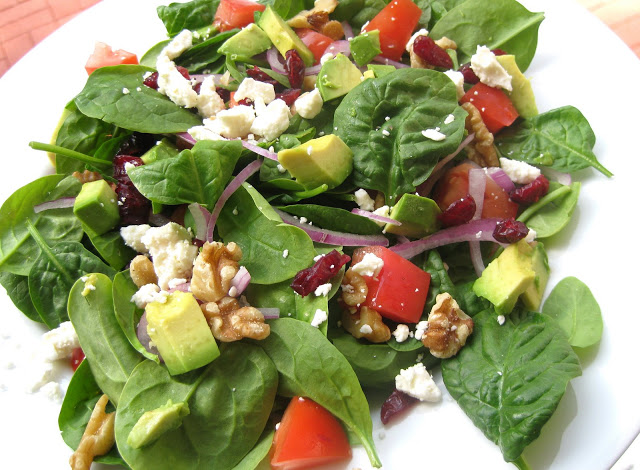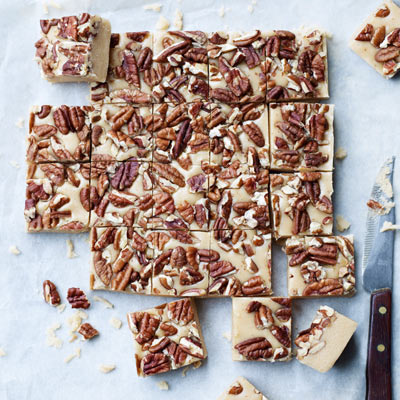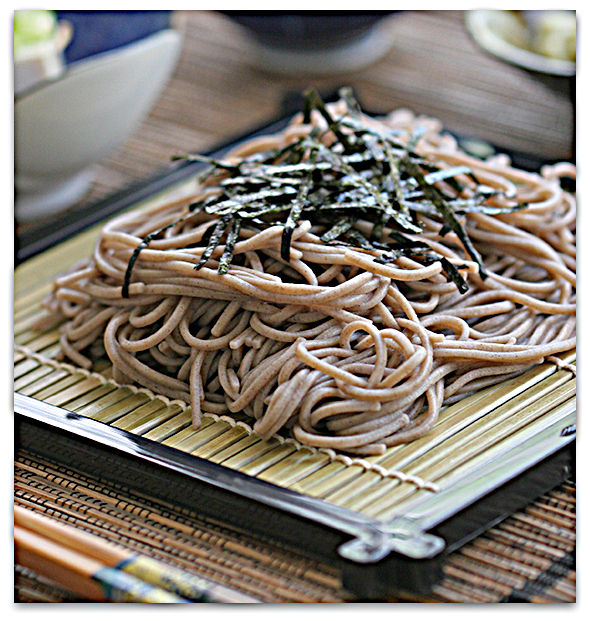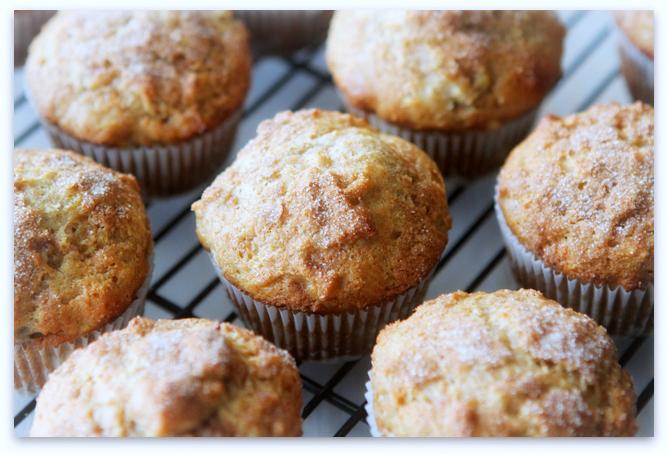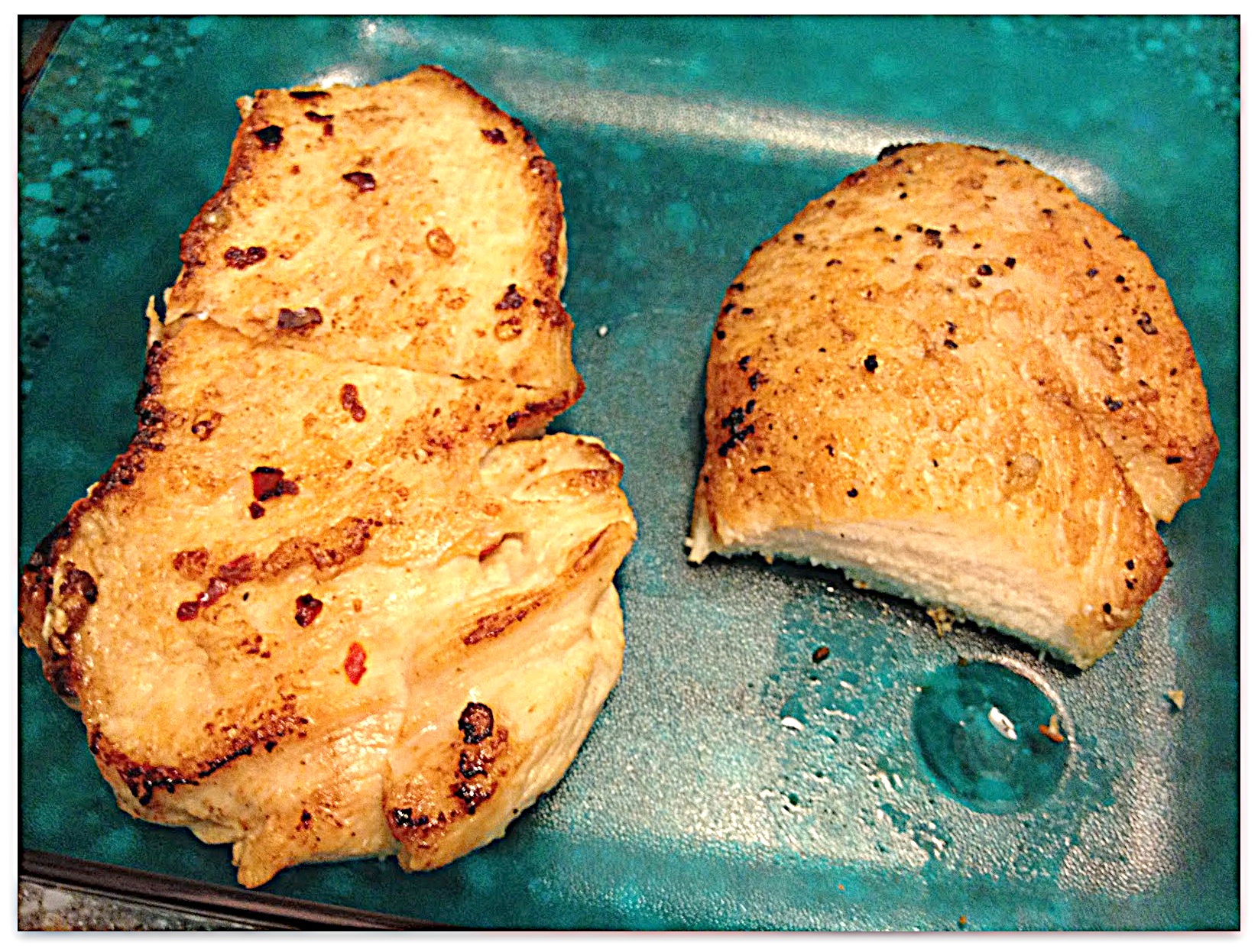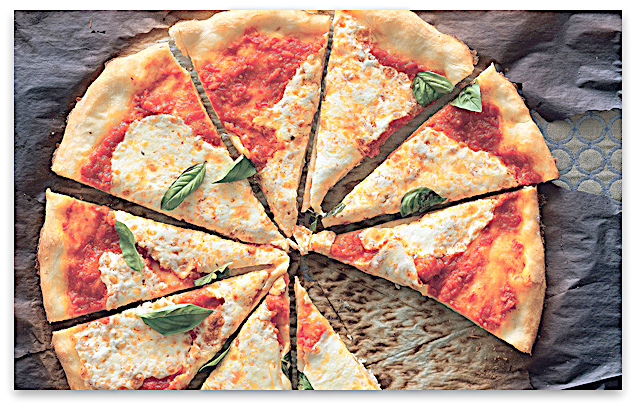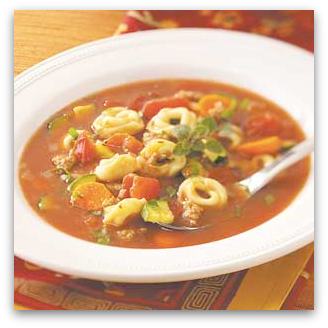So here are some tips for barbecue beginners, using only a humble grill. If you don’t have one of these, get one. They’re cheap, and no serious home grilling can be done comfortably without one.
1. Plan ahead.
You are going to need a minimum of one hour for ribs, two hours for roast beef, 6-7 hours for pulled pork, and 10-12 hours or more for brisket. For that reason, plan on not doing pulled pork or brisket, at least at this stage. These times are liberal estimates; they assume that your temp is perfect, and that you aren’t opening it up more often than you need to. The time also doesn’t include prep time.
2. Your preparation,
basically consists of putting salt and pepper, or some kind of spice rub, on the meat. Don’t bother letting it sit out or any of that stuff. It’s fine if you put it on right before cooking. If you have a rub, reserve some to put in the mop/glaze. Get a bottle of your favourite barbecue sauce too.
3. Fuel:
You’ll want hickory chips or chunks. Not apple or cherry. Fruit woods are for the weak. For the basic fuel, you’ll want a big bag (20 lbs) of regular Kingsford briquettes. You don’t want lump hardwood for this. It burns too hot, too fast, and you have actual wood to flavour with.
4. Get a small bowl.
Add half a bottle of good beer, a couple of tablespoons of the sauce (I use the cheapest, most generic sweet sauce I can find — typically Kraft Original or Open Pit, but you might want something classier. Which is fine. Add a splash or two of cider vinegar and two to three tablespoons of rub. Mix it over a warm fire. You now have your mop. You will brush a little of this on every time you add chips, which is to say every half hour or so.
5. Speaking of chips,
you can soak them if you want — they will burn a little more slowly that way — but you don’t need to get smoke out of them. Have you ever looked at a fireplace? The wood in it hasn’t been soaked, but it gives off smoke anyway. Plenty of it.
6. Put as much room as possible
between the coals and the meat. You may want to even put a physical divider, like a cookie sheet, to shield it from radiant heat. You don’t want it to get sunburnt.
7. Take your time.
Don’t rush it. Don’t look at it too often. Try to keep the temperature around 225 degrees or a little higher. Keep the vents at least half open; a steady stream of bluish or whitish smoke should come out. It should be steady, not billowing.
8. The meat is done when it feels done;
that is, when you can open it up with your hands, and it looks pink inside. Don’t let it get dried out. And don’t be unhappy if it’s not perfect. Good barbecue, like everything else, is rarely the product of a first try.
Get It Hot!
Preheat your grill 15 to 25 minutes before you start cooking to make sure it reaches the right temperature (and to kill any bacteria). Your grill should be 400-450°F for high, 350-400°F for medium-high, 300-350°F for medium and 250-300°F for low heat. A properly heated grill sears foods on contact, keeps the insides moist and helps prevent sticking. While searing doesn’t “seal in” the juices (contrary to popular belief ), it does create improved flavors through caramelization.
Additive-Free
If you do choose charcoal grilling, we recommend additive-free lump charcoal, which is just charred wood. Conventional briquettes may contain wood scraps and sawdust as well as coal dust, sodium nitrate, borax and additives like paraffin or lighter fluid. As for lighter fluid, we recommend avoiding it altogether. Lighter fluid can release volatile organic compounds (VOCs) into the air, leave an unpleasant residue on food and pose a serious danger if used improperly.
Brush It Off
It’s easier to remove debris when the grill is hot, so after preheating, use a long-handled wire grill brush on your grill rack to clean off charred debris from prior meals. Scrape again immediately after use.
Oil It Up
Even on a clean grill, lean foods may stick when placed directly on the rack. Reduce sticking by oiling your hot grill rack with a vegetable oil-soaked paper towel: hold it with tongs and rub it over the rack. (Do not use cooking spray on a hot grill.)
Safety First
Food safety is a top priority, so keep these simple rules from the USDA in mind: avoid cross-contamination by using separate cutting boards, utensils and platters for raw and cooked foods; refrigerate foods while marinating; and never baste with the marinating liquid. (Make extra marinade just for basting or boil your marinating liquid first.)
Marinate Your Meat
Marinating does more than infuse food with flavor; it also inhibits the formation of potentially carcinogenic HCAs (heterocyclic amines), which form when grilling “muscle meats” like poultry, red meat and fish. According to the American Institute for Cancer Research (AICR), marinating can reduce HCA formation by as much as 92 to 99 percent.
A Chimney Starter
A chimney starter (weber.com, $14.99) makes starting a charcoal fire a breeze. Just place crumpled paper in the bottom of the chimney, fill it with charcoal and light the paper. In about 20 minutes the coals will be ready to spread evenly in the bottom of the grill—no kindling, no lighter fluid, no perfect pyramid required.
Is It Done?
The best way to know if protein is fully cooked is to check its internal temperature with an instant-read thermometer.
Use A Grill Basket
Use a grill basket for foods that might fall through the grill rack or are too cumbersome to turn over one by one (vegetables, fish, tofu, fruits, etc.).
The Hand Test
To gauge the temperature of a grill without a thermometer, place your open palm about 5 inches above the grill rack; the fire is high if you have to move your hand in 2 seconds, medium if you have to move your hand in 5 seconds and low if you have to move your hand in 10 seconds.
Tame The Flames
Flare-ups happen when fat drips onto the heat source and catches fire. This causes carcinogenic PAHs (polycyclic aromatic hydrocarbons) to form and accumulate on your food. Meat licked by flames also tastes “off” and flames may char the outside of food before the inside has thoroughly cooked. To reduce flare-ups, select lean cuts of meat, trim excess fat and remove poultry skin. And, keep a squirt bottle of water near the grill to quickly douse any unexpected flare-ups.
13. Give It A Rest
Let finished meats rest on a clean platter, tented with foil, for about 10 minutes before carving so juices can redistribute evenly.





